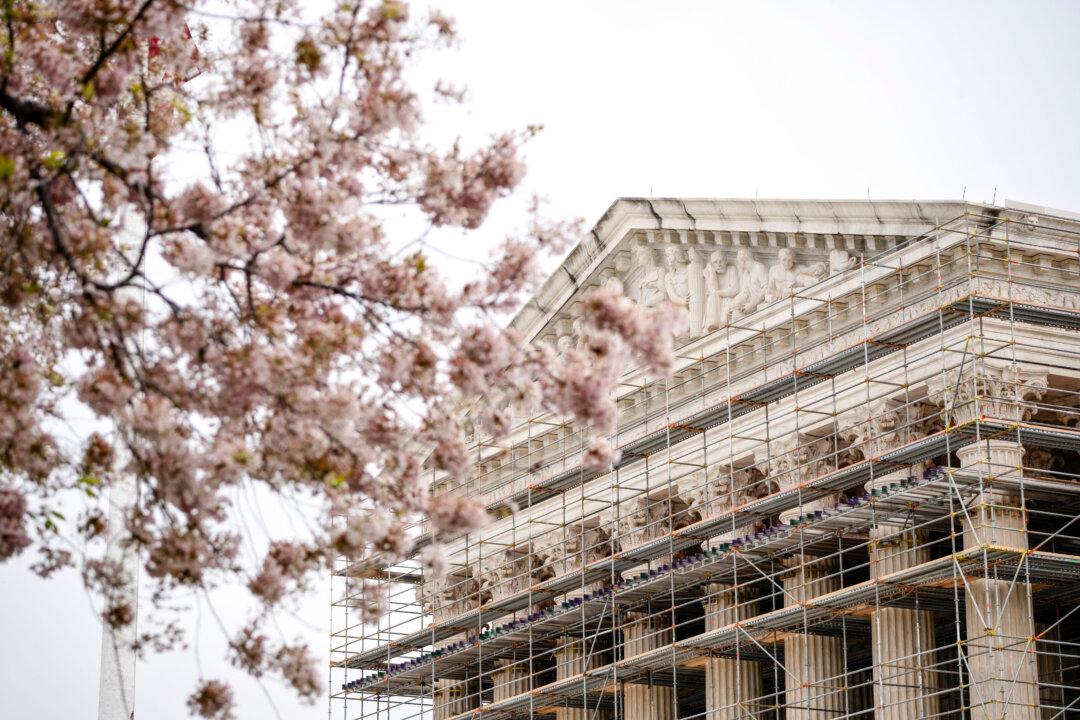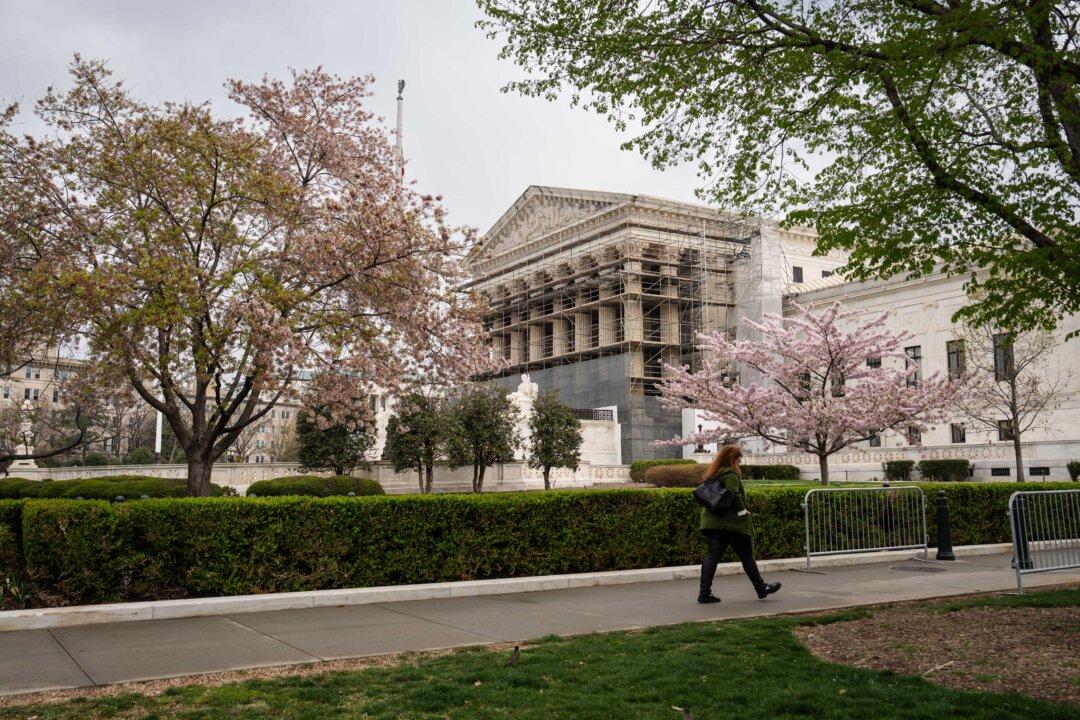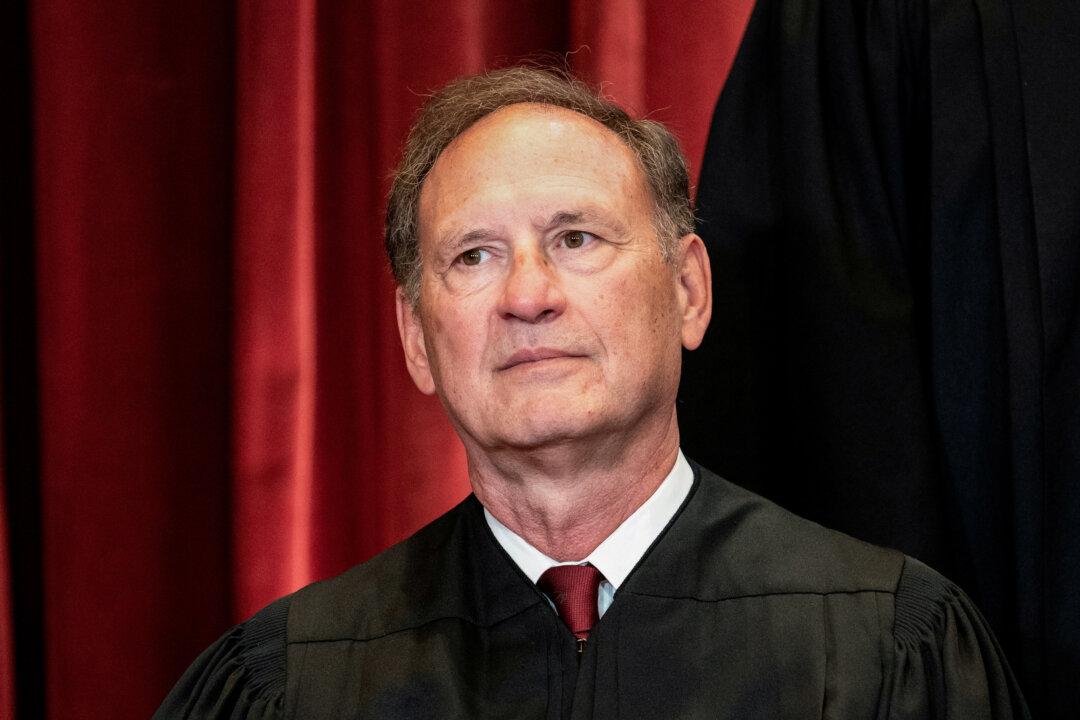The Supreme Court questioned on Feb. 28 how much authority the Environmental Protection Agency should have to regulate and curb energy production in order to combat the effects of so-called climate change.
West Virginia and 18 other states are challenging the authority the Clean Air Act provides the EPA. The challengers hope the high court resolves whether the U.S. Constitution gives Congress power to delegate regulatory authority to the EPA to limit so-called greenhouse gas emissions.
The problem is the EPA is trying to transform itself from “an environmental regulator into a central energy planning authority,” said Morrisey, a Republican.
In 2016, the Supreme Court overturned the Obama-era Clean Power Plan (CPP), which expanded controls over industry. Next, the deregulation-minded Trump administration’s Affordable Clean Energy Rule (ACE Rule), eased controls on industry.
Judge Ketanji Brown Jackson, whom President Joe Biden nominated to the Supreme Court on Feb. 25, is a member of that influential appellate court, but she didn’t join the court until five months after the ruling, replacing Merrick Garland who went on to become Biden’s attorney general.
During oral arguments on Feb. 28, West Virginia Solicitor General Lindsay See said Congress had directed EPA to partner with states “to regulate on a source-specific level, which means identifying measures particular buildings can take to reduce their own emissions.”
But the D.C. Circuit went beyond that, giving the EPA “much broader power ... to reshape the nation’s energy sector, or most any other industry for that matter, by choosing which sources should exist at all, and setting standards to make it happen.”
It did that even though electricity generation is within states’ traditional regulatory authority, See said. As a result, EPA “can now regulate in ways that cost billions of dollars, affect thousands of businesses, and are designed to address an issue with worldwide effect,” even though the Clean Air Act “did not green-light this transformative power.”
U.S. Solicitor General Elizabeth Prelogar told the justices that the appeal should never have been brought because the case “is not justiciable,” meaning it is not the kind of case a court can hear. And even if it were justiciable, the petitioners “are wrong on the merits in any event.”
The D.C. Circuit’s ruling means there is “no EPA rule in effect.” The agency action challenged was not about the Clean Power Plan, but instead was about the decision to replace it with the ACE Rule, she said.
“The D.C. Circuit vacated ACE but chose not to reinstate the CPP, so no federal regulation will occur until EPA completes its upcoming rulemaking,” Prelogar said. The petitioners cannot show they were injured by the decision, which is “the very definition of an advisory opinion, which the court should decline to issue.”
“No one seriously defends the ACE Rule’s view that the statute restricts states and power plants to inside-the-fence-line measure[s],” she said. Such a restriction “is unprecedented and would threaten to disrupt an industry that has long relied on measures like trading and averaging to reduce emissions in the most cost-effective way.”
Chief Justice John Roberts told Prelogar that as far as the petitioners are concerned, just because there is no regulation in place that “doesn’t mean they’re happy” with current EPA policies.
“They would like regulation according to their particular perspective. They’d like good regulation, which they think they had with ACE, and now they don’t have it. Again, why isn’t that a justiciable harm?” he said.
Justice Brett Kavanaugh took aim at Prelogar’s arguments, saying that the Supreme Court has said that “Congress must speak clearly if it wishes to assign an agency decisions of vast economic and political significance.” The court is skeptical when agencies “claim to have found in a long-extant statute an unheralded power to regulate a significant portion of the American economy.”
Justice Samuel Alito suggested Prelogar’s approach wouldn’t impose any limits on EPA’s authority.
“I really don’t see what the concrete limitations are in any of what you said,” Alito said. “If you take the arguments about climate change seriously, and this is a matter of survival, so long as the system that you devise doesn’t mean that there isn’t going to be … electricity, and so long as the costs are not absolutely crushing for the society, I don’t know why EPA can’t go even a lot further than it did in the CPP.”
The three liberal justices—Stephen Breyer, Elena Kagan, and Sonia Sotomayor—all seemed skeptical of the states’ efforts to curtail EPA, while conservatives Neil Gorsuch and Amy Coney Barrett focused on the current regulatory regime.
Gorsuch said the EPA had presented a “strong argument” that the states are not currently being harmed because there is no rule in place.
Barrett said the EPA does currently have authority to regulate greenhouse gas emissions “so there’s a match between the regulation and the agency’s wheelhouse.”





